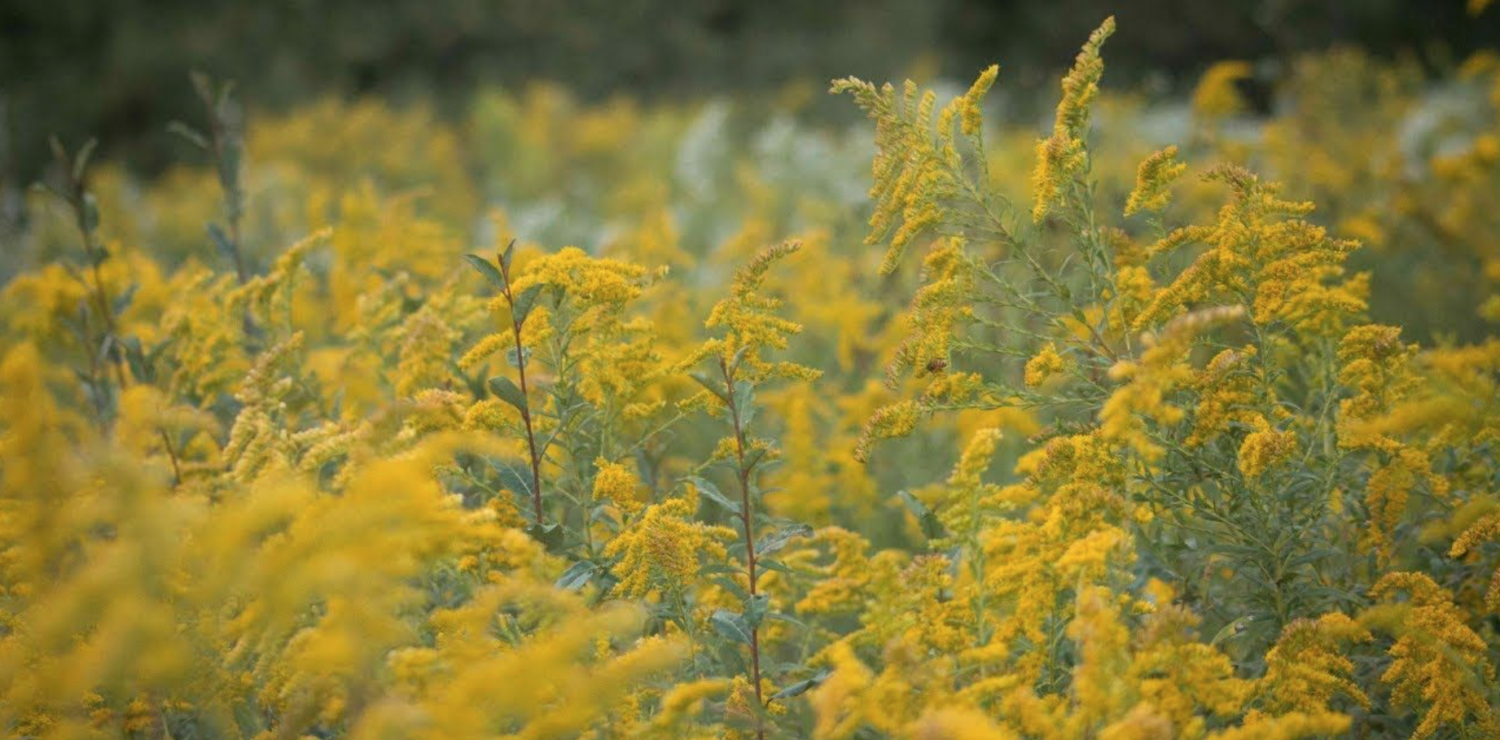Additions to the Botanical Survey of Griggs Reservoir

Part I: Four High CC & Four Low CC Species
a. Plant Species Identified
- Spindle (Euonymus europaeus) — CC of 0
- New England Aster (Symphyotrichum novae-angliae) — CC of 2
- Calico Aster (Aster lateriflorus) — CC of 2
- Swamp (Small-Flowered) Agrimony (Agrimonia parviflora) — CC of 2
- Tall Boneset (Eupatorium altissimum) — CC of 0
- Wingstem (Verbesina alternifolia) — CC of 5
- Cut-Leaved Teasel (Dipsacus laciniatus) — CC of 0
- Wild Bergamot (Monarda fistulosa) — CC of 3
- Purple Coneflower (Echinacea purpurea) — CC of 6
- Northern Red Oak (Quercus rubra) — CC of 6
- Purpletop Tridens (Grease Grass) (Tridens flavus) — CC of 1
- Eastern Redbud (Cercis canadensis) — CC of 3
- Spotted Lady’s Thumb (Persicaria maculosa) — CC of 0
- Hollow Joe-Pye Weeds (Eupatorium fistulosum) — CC of 6
- Chicory (Cichorium intybus) — CC of 0
- Queen-Anne’s-Lace (Wild Carrot) (Daucus carota) — CC of 0
- Swamp Milkweed (Asclepias incarnata) — CC of 4
- Staghorn Sumac (Rhus typhina) — CC of 2
- Chinese Elm (Ulmus parvifolia) — Introduced
- Amur Honeysuckle (Lonicera maackii) — CC of 0
- Common Milkweed (Asclepias syriaca) — CC of 1
- American Water-Willow (Justicia americana) — CC of 9
- Autumn Clematis (Japanese Virgin’s-Bower) (Clematis terniflora) — CC of 0
- American Sycamore (Platanus occidentalis) — CC of 7
- Eastern Red Cedar (Juniperus virginiana) — CC of 3
- Golden-Raintree (Koelreuteria paniculata) — CC of 0
- Riverbank Grape (Vitis riparia) — CC of 3
- False Nettle (Boehmeria cylindrica) — CC of 4
- Jerusalem Artichoke (Helianthus tuberosus) — CC of 3
- American Sweetgum (Liquidambar styraciflua) — CC of 6
- Chinese Sweetgum (Liquidambar formosana) — Introduced
- Freeman’s Maple (Acer x freemanii) — CC of 3
- Fringed Loosestrife (Lysimachia ciliata) — CC of 4
- Stinking Iris (Iris foetidissima) — Introduced
- Ditch Stonecrop (Penthorum sedoides) — CC of 2
- Gray Dogwood (Cornus racemosa) — CC of 1
- Red Maple (Acer rubrum) — CC of 2
- Small Carpetgrass (Hairy Joint Grass) (Arthraxon hispidus) — CC of 0
- Tulip Tree (Liriodendron tulipifera) — CC of 6
- Common Hackberry (Celtis occidentalis) — CC of 4
- White Mulberry (Morus alba) — CC of 0
- Northern Catalpa (Catalpa speciosa) — CC of 0
The floristic index can be calculated using the following formula:
I = ∑ (CCi) / √ (N native)
The calculated FQAI value of Griggs Reservoir is 16.01. This value was determined by summing the CC values of all the plant species gathered, and then dividing this number by the square root of the total number of plant species gathered.
b. Four of the Highest CC
Purple Coneflower (Echinacea purpurea) — CC of 6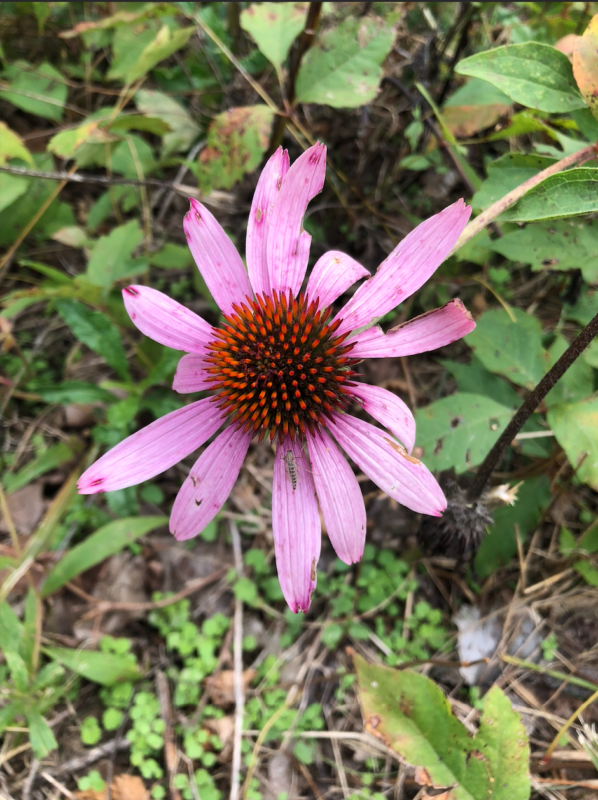
-
- The Purple Coneflower can be identified by its pinkish-purple color, its height of up to 3 to 4 feet, its ray flowers positioned in 1-2 rows, and its leaves that are rough to the touch.
- The Purple Coneflower was used by Native Americans to treat nearly any type of illness. It is now one of the most cultivated plants for medicinal use in the United States and Europe. Native American’s utilized the coneflower for treating coughs, stomach discomfort, sore throats, treating skin wounds and conditions, snakebite wounds, and treating rabies. The plant is used to treat illness like colds, the flu, and upper respiratory infections.
- Read more at https://dsps.lib.uiowa.edu/roots/purple-coneflower/
Hollow Joe-Pye Weeds (Eupatorium fistulosum) — CC of 6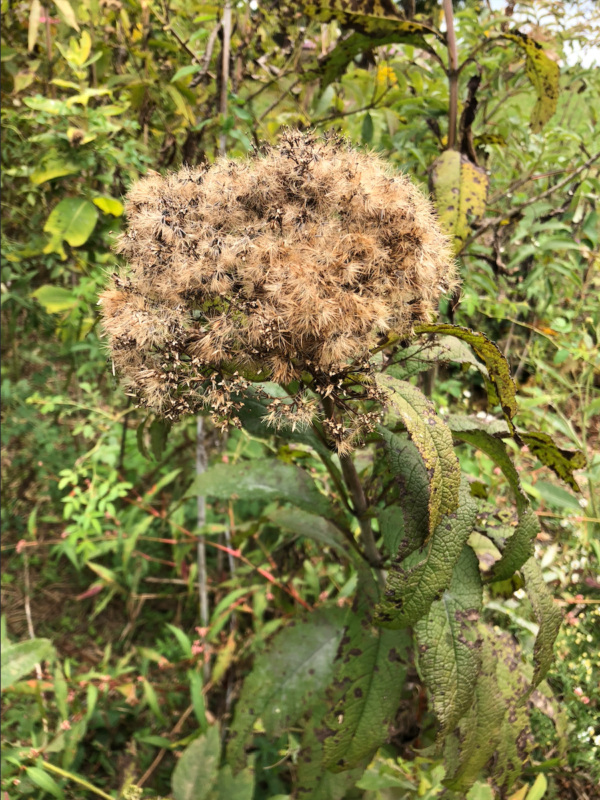
-
- The Hollow Joe-Pye Weed can be identified by its large whorled leaves, its hollow stems without spots, its height of about 4 to 7 feet tall, and erect stature. The flowers smell vanilla-like, and are purple or pink, growing in clusters.
- The nectar of the flowers of the Hollow Joe-Pye Weed attract many pollinators, particularly honeybees and butterflies. The Pearl Crescent butterfly larvae is supported by the Joe-Pye Weed. Songbirds also enjoy the seeds.
American Sycamore (Platanus occidentalis) — CC of 7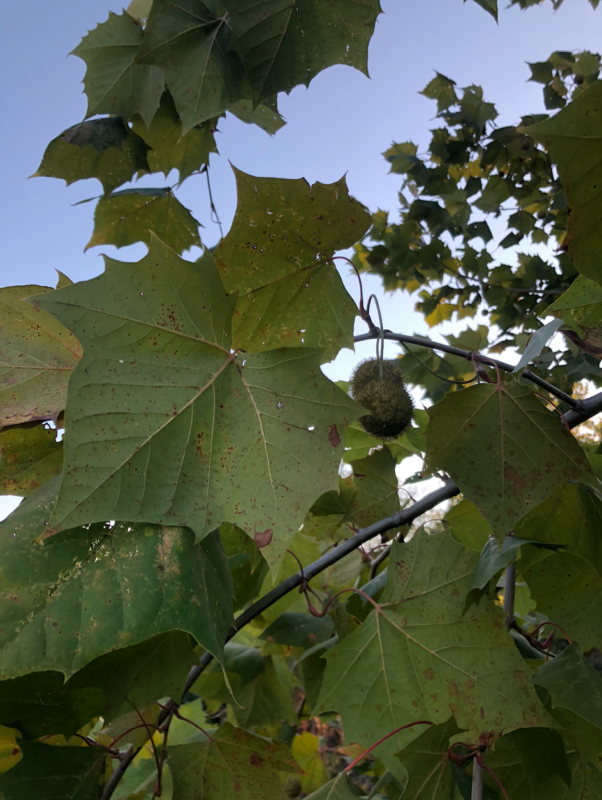
-
- The American Sycamore can be identified by its large, green, alternate, lobed leaves. The fruit of the tree is also very characteristic, as it is a fruit ball that is fuzzy.
- The wood of the American Sycamore is commonly used for chopping blocks, furniture, as well as barrels and crates. Native American utilized the trunks of this tree to construct canoes by hollowing them out.
American Water-Willow (Justicia americana) — CC of 9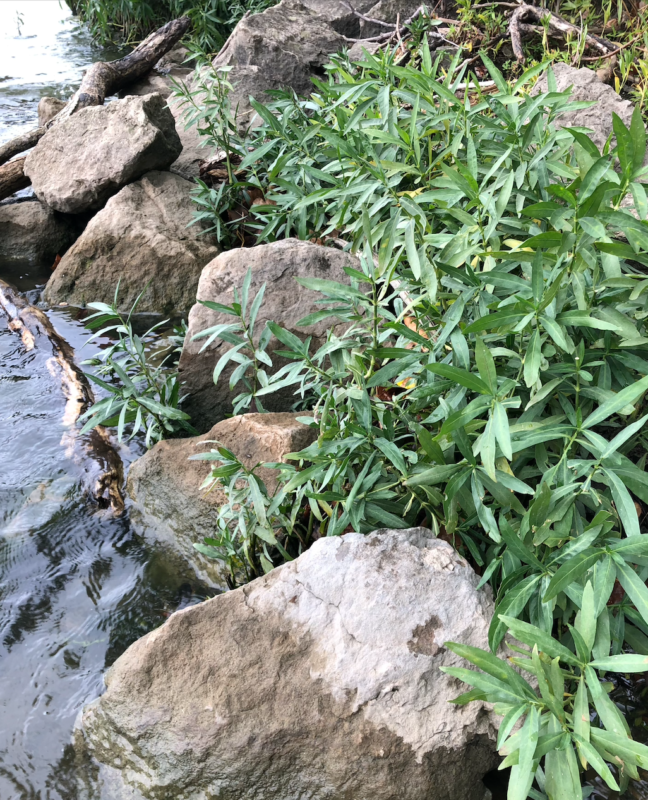
-
- The American Water-Willow can be identified by its long, green, “willow-like” leaves, its white and purple flowers that bloom in late summer and early fall, and its location growing in shallow water up to 3 feet in depth.
- Plants like the American Water-Willow, that grow along waterways, help to keep streams clean and healthy. Bees and various other insects enjoy the flowers, and insects and mammals eat the foliage. The plant also helps to deter erosion along the banks it grows on.
The American Water-Willow receives a coefficient of conservatism (CC) of 9, because the CC is not dependent on how common a plant is, but rather how limited its habitat is. The American Water-Willow can be found growing throughout Ohio, however it grows essentially only on gravel bars of mainstem rivers.
c. Four of the Lowest CC
Spindle (Euonymus europaeus) — CC of 0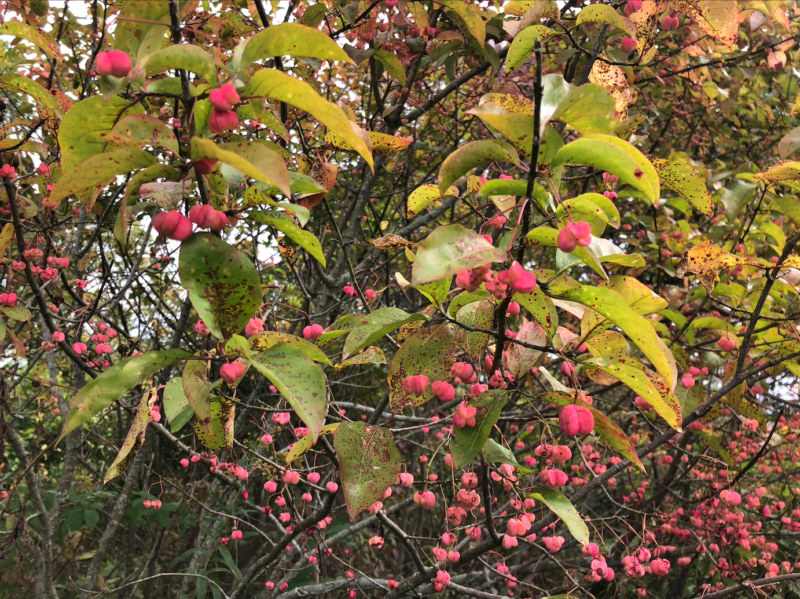
-
- The Spindle can be identified by its bright colored berries in the fall–– pink, red, and orange in color. The leaves can range from tan, to yellow-green, to burgundy. When the plant flowers, they are small, about a half an inch in size, and yellow-green in color.
- The Spindle plant produces a volatile oil that is an ingredient in soap. It also produces a charcoal that can be extracted from the wood and used by artists.
Tall Boneset (Eupatorium altissimum) — CC of 0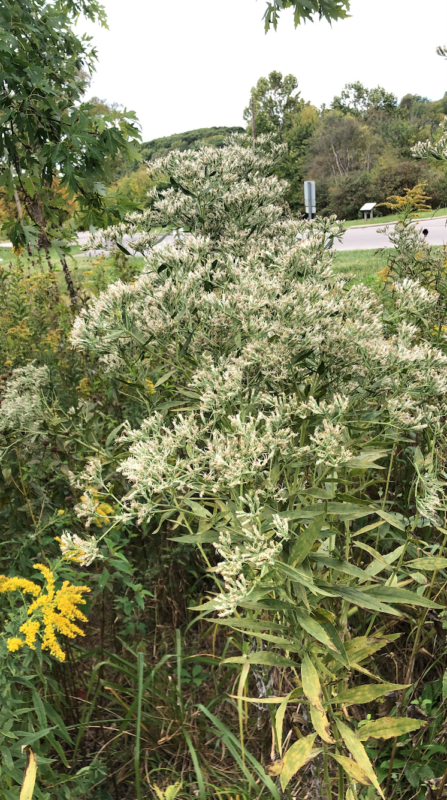
-
- The Tall Boneset can be identified by its white flowers that are clustered at the top of the stems with a flat-top. The plant typically blooms from August to October. The stems are hairy at the upper half of the plant. The Tall Boneset stands on average at about 3-4 feet, but can be more than 6 feet.
- Native American’s utilized the Boneset as a remedy for fevers and colds, specifically as a way to promote sweating and help make a fever pass. It was also utilized to help muscle pain, joint aches, and rheumatic conditions. The Boneset was also used to aid in digestion and as a laxative. The name Boneset came around because it was said to help broken bones heal.
- Read more at https://medicinalherbals.net/boneset-herb/
The Tall Boneset receives a coefficient of conservatism (CC) of 0, because the CC is dependent on how limited a plants habitat is. The Tall Boneset is very flexible in where it can grow, including in prairies, fields, glades, open woods, the banks of rivers and streams, ledges, ditches, roadsides, and other open, disturbed, or waste places. The CC of 0 represents that the Tall Boneset is not limited it where it can grow.
Spotted Lady’s Thumb (Persicaria maculosa) — CC of 0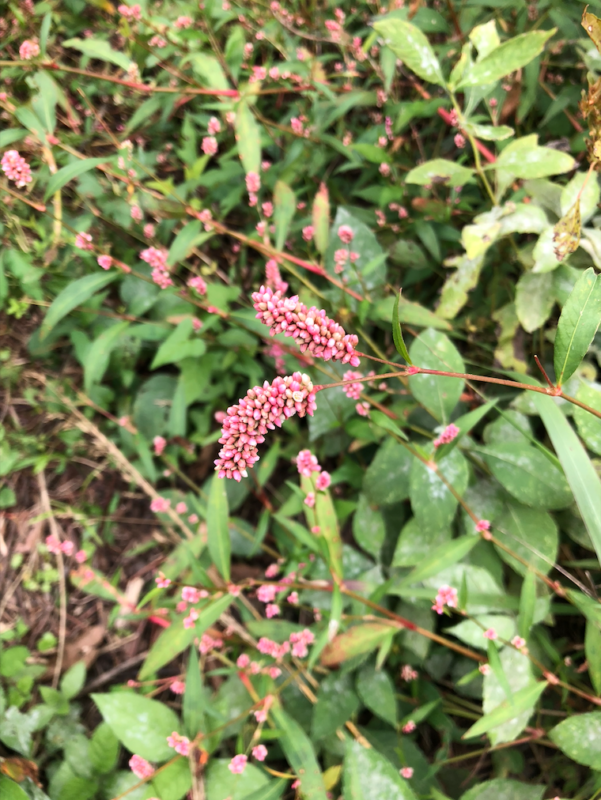
-
- The Spotted Lady’s Thumb can be identified by its dense inflorescent spike, tiny pink flowers that have four or five lobes, are fused at the base, have six stamens, two fused carpels, and two styles. It stands about 1 meter tall.
- The Spotted Lady’s Thumb is seen as a weed and not typically cultivated. The young leaves can be eaten as a leaf vegetable, and a yellow dye can be extracted from the plant.
Chicory (Cichorium intybus) — CC of 0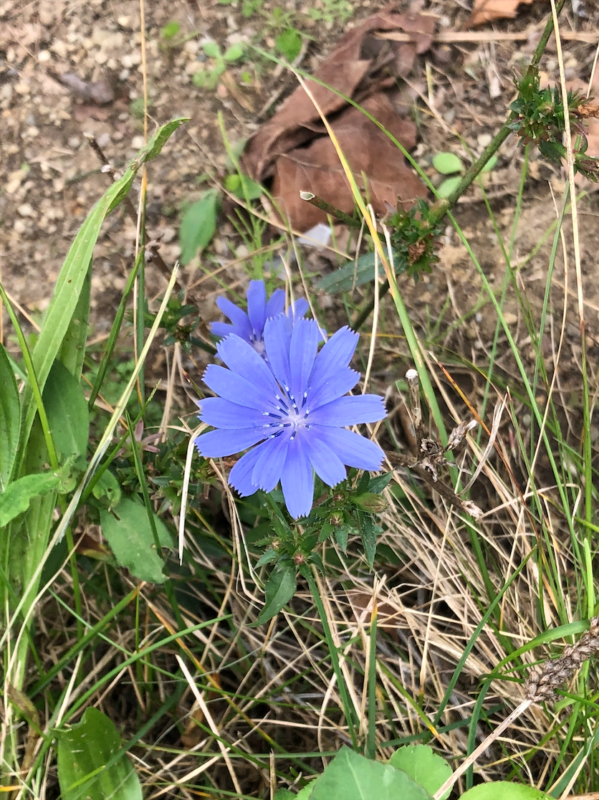
-
- The Chicory can be identified by its blue flowers that line many roadsides, railroads, and other disturbed sites, waste grounds, or unmaintained lawns, pastures, and fields. The flowers are typically a sky blue, with some pink or white flowers. Each flower has 5 sharp teeth.
- The young leaves of the Chicory can be eaten raw as a salad green with a bitter taste. The older leaves can be cooked and will reduce the bitterness. The roots of the sativum variety are mixed with and used as a coffee substitute in various parts of the world, including the Southern United States and New Orleans.
Part II: Four Invasive Species
Amur Honeysuckle (Lonicera maackii) — CC of 0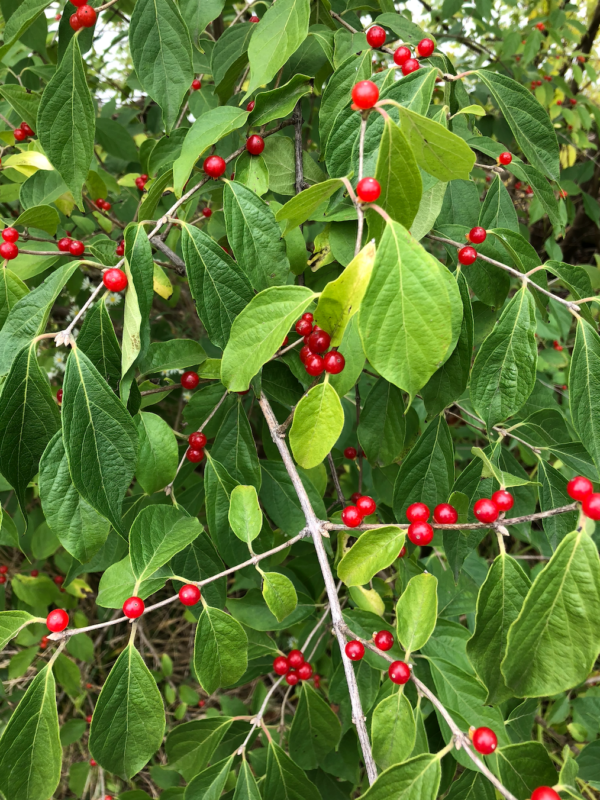
-
- The Amur Honeysuckle can be identified by its stature of about 12 feet, width of about 6 feet, its opposite leaf arrangement, simple leaves, flowers that are white to cream color, and its’ red berry fruits that cluster. This Honeysuckle can be found around fences, pastures, fields, roadsides, forests, and woodlands.
- Since this plant is an invasive species, there are various methods of control taken by humans. Chemical treatments can be applied to the tree through a process of using a hatchet, machete, or axe to create an opening in the bark, and then apply an herbicide.
Cut-Leaved Teasel (Dipsacus laciniatus) — CC of 0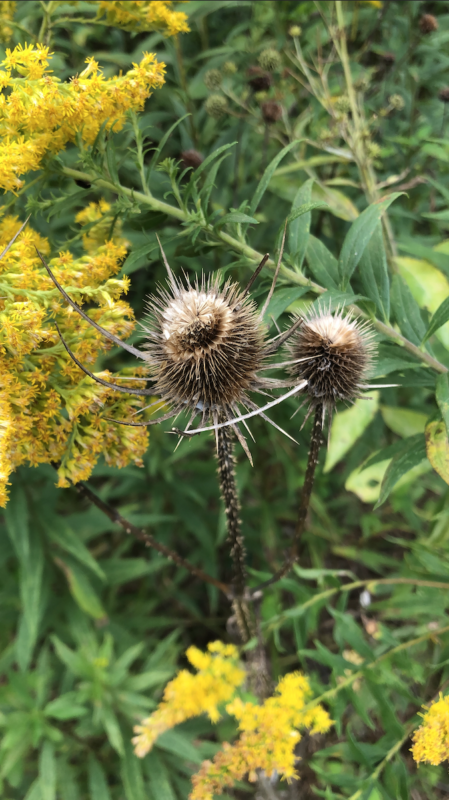
-
- The Cut-Leaved Teasel can be identified by its large, opposite, oblong, prickly leaves. The leaves of the plant form a cup around the stem, and when in bloom it forms hundreds of small flowers. There are stiff, spiny bracts that curve up from the base of the flower head.
- Since this plant is an invasive species, there are various methods of control taken by humans. Young plants can be dug up taking precaution to remove as much root as possible. Full grown plants can be cut down when they are in “full bud” stage and will re-sprout but not flower. Stems should be bagged and disposed of.
Northern Catalpa (Catalpa speciosa) — CC of 0
-
- The Northern Catalpa can be identified by its large, heart-shaped leaves. The tree produces flowers characterized by fused white petals that have some little bits of yellow, orange, and purple. The fruits are long and thin, looking green in the summer and brown through the fall and winter.
- The Northern Catalpa was introduced to Ohio in order for farmers to harvest the lightweight, rot resistant wood for fenceposts. It has been cultivated in Ohio for about 200 years. It is now typically used as an ornamental shade tree.
White Mulberry (Morus alba) — CC of 0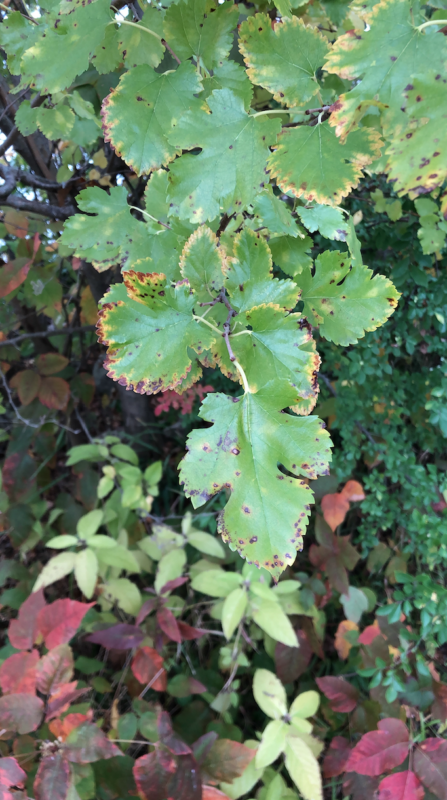
-
- The White Mulberry can be identified by its alternate leaves with variable shape, but have heart-shaped bases and blunt teeth. The tree produces multiple fruits that look similar to a blackberry, but range in color from white to pink, and then red to purple.
- The White Mulberry can be found throughout the United States, specifically in old fields, urban lots, roadsides, the edges of forests, and various other disturbed areas. This tree can be an ecological threat because it displaces native species and can possibly hybridize and transmit a root disease of the native Red Mulberry. The White Mulberry was brought here from Asia during colonial times to be a food source for silkworms.
Part III: Four Substrate-Associated Species
Eastern Redbud (Cercis canadensis) — CC of 3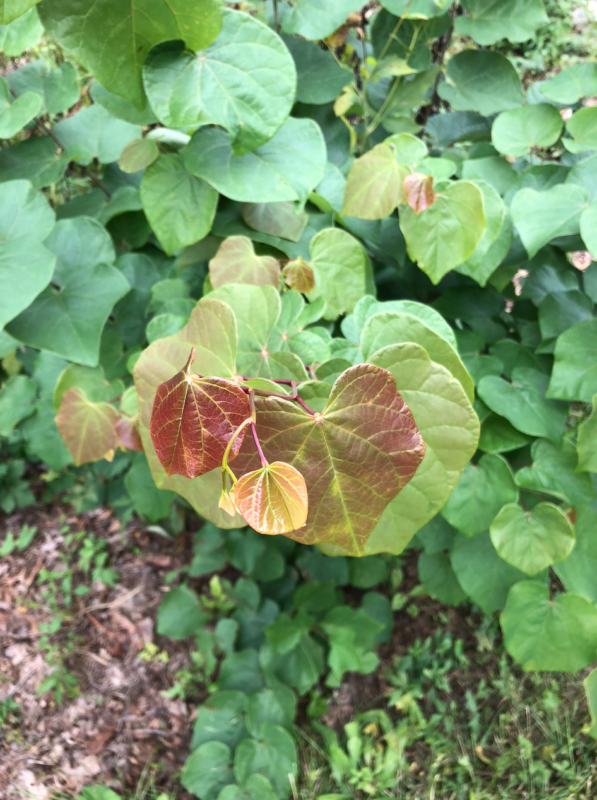
-
- The Eastern Redbud can be identified by its simple, alternate, heart-shaped leaves. The flowers are red-purple-pink in color. These flowers can be found on the trunk. It produces fruit that looks characteristic of the Fabaceae pea pod.
- Read more at https://www.uky.edu/hort/Eastern-Redbud
- The Eastern Redbud is associated with limestone or limy substrates. Forsyth explains that Redbud’s typically occur on higher and drier sites where limestone is at a shallow depth below the ground. The Griggs Reservoir is located in Franklin County, Ohio, which falls into the more Western, limestone portion of the state. This portion of Ohio seems to be where limestone is just below the surface. I concur with Forsyth.
- The Eastern Redbud can be identified by its simple, alternate, heart-shaped leaves. The flowers are red-purple-pink in color. These flowers can be found on the trunk. It produces fruit that looks characteristic of the Fabaceae pea pod.
Eastern Red Cedar (Juniperus virginiana) — CC of 3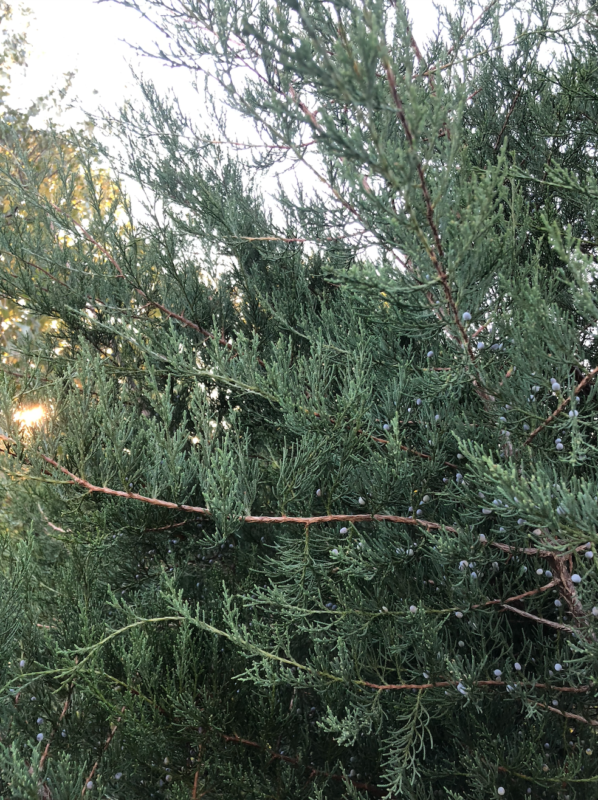
-
- The Eastern Red Cedar can be identified by its scale-like leaves, red-brown bark, small, light blue-green flowers that bloom in late winter / early spring, and spherical blue fruits that develop in fall on female trees. The tree grows to about 30-40 feet tall.
- The Eastern Red Cedar is associated with limestone or limy substrates. Similar to the Redbud, it also typically occurs on higher and drier sites where limestone is at a shallow depth below the ground. The Griggs Reservoir is located in Franklin County, Ohio, which falls into the more Western, limestone portion of the state. This portion of Ohio seems to be where limestone is just below the surface. I concur with Forsyth.
Common Hackberry (Celtis occidentalis) — CC of 4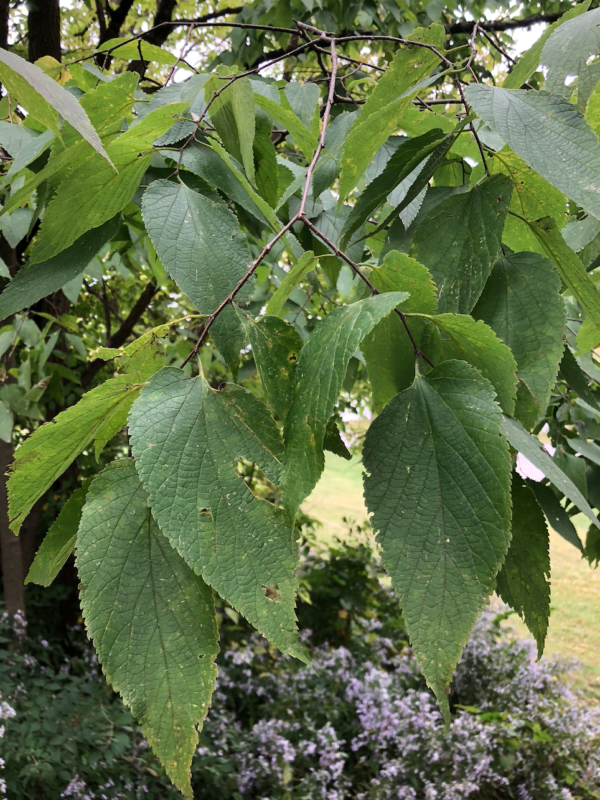
-
- The Common Hackberry can be identified by its alternate, simple, and sharply toothed leaves. The leaves have 3 main veins that emerge from the base and a sharply pointed tip. The leaves are rough to the touch on the upper surface, and hairy on the lower surface.
- The Common Hackberry is associated with limestone or limy substrates. Hackberry is similar to the Redbud and the Eastern Red Cedar in that is can occupy the high and dry sites of the limestone bedrock, but can also be found in the floodplains of Ohio. I concur with Forsyth.
Northern Red Oak (Quercus rubra) — CC of 6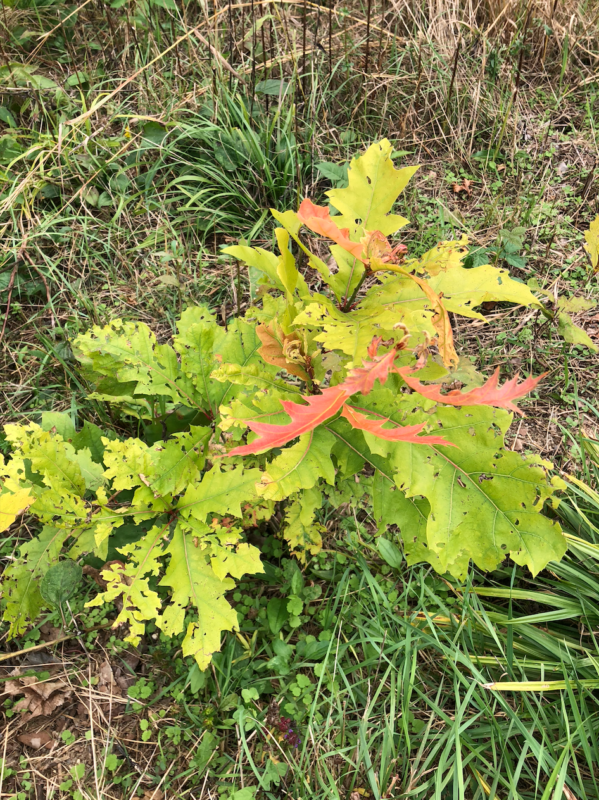
-
- The Northern Red Oak can be identified by its leaves that begin as pink-red, turn a dark green during the summer, and then change to a red during the fall. The leaves are alternate, simple, and have 7 to 11 lobes with bristle tips. The tree makes acorn fruits that are medium brown. Male and female trees produce separate flowers–– the males producing catkins and the females producing spikes on their leaves.
- The Northern Red Oak is associated with high-lime, clay-rich substrates that developed in the till of Western Ohio. The Griggs Reservoir falls inside the glacial boundary, so it is possible that substrates present in the thick till of Western Ohio allow for the Northern Red Oaks presence. I concur with Forsyth.
